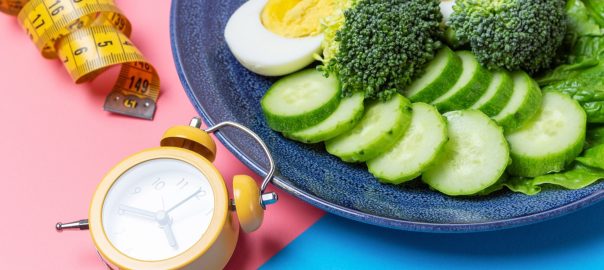
Weight Loss on a Keto Diet
Keto Weight Loss: A Timeline
Learn what to expect after 1 week, 1 month, and 1 year of following a ketogenic diet. Plus, discover tips for how to keep the weight off after keto.
Disclaimer: The information in this article is not intended to replace personalized medical advice. A low carb diet may not be suitable for you. Consult your health care provider before making any changes to your lifestyle or use this information at your own risk.
Many people have turned to the ketogenic diet to lose weight. Although this isn’t the only benefit of ketogenic dieting, it is popular and effective for starting a keto diet. If you’ve heard the rumours about keto diets and weight loss but still aren’t sure what to expect, keep reading to learn more about how keto diets work and the weight loss results people generally experience after 1 week, 1 month, and 1 year!
As always, speak to a medical professional about your unique health circumstances before making any major lifestyle changes to determine the right weight management plan for you.
Keto Diet – Week One
The Keto Flu
The initial drop in dietary carbohydrates during the first 7-10 days of a ketogenic diet typically causes a number of physical side effects in the body. Collectively, these side effects are known as the “Keto Flu” and may include:
- Fatigue
- Sugar cravings
- Trouble sleeping
- Difficulty exercising
- Irritability (or feeling “hangry”)
- Headaches
- Nausea
- Constipation or diarrhea
Although this doesn’t exactly relate to weight loss, many people struggle to make it through this difficult period, which can affect their progress towards their goals. Luckily, the keto flu is short-lived, and the benefits of keto will kick in afterwards! There are two approaches you can take to cope with the keto flu:
- The “cold turkey” method.
Under this method, aim to stick to a “strict” keto diet for the first week or so by restricting carbohydrates to less than 10% of your daily calories. By cutting carbs all at once, the keto flu will subside sooner and your body will enter ketosis faster. Load up on keto-friendly foods including nuts, seeds, avocados, non-starchy vegetables, extra virgin olive oil, coconut oil, eggs, fatty fish and MCT oil to help your body produce more ketones. There is a light at the end of this tunnel!
- A gradual approach.
An alternate approach is to reducing carbs little by little each day until you reach a point where they make up 10% or less of your daily calories. This approach will reduce the severity of keto flu symptoms, but you can expect them to persist for longer.
Water Loss
Expect to lose primarily water weight during the first week of keto, which could account for anywhere between 1-10 pounds! However, this is not actual fat loss and if you were to quit keto now, it would all come back.
Water loss occurs when we enter ketosis because the body starts depleting its stores of glycogen in muscle tissues, which is made up of glucose and water molecules. As a result, you might be finding yourself running to the washroom more frequently during Week 1 of the keto diet. Be sure to keep up your hydration and replace lost electrolytes (namely sodium, magnesium, and potassium) to make up for more frequent urination. Add a squeeze of lemon juice and a pinch of salt to your water for a quick hydration fix!
One Month in Ketosis
The key to any kind of weight loss really boils down to calories. A caloric deficit allows for reserves of fat in the body to be broken down and used as energy after dietary calories have been burned. Being in ketosis doesn’t automatically result in weight loss, but it does make fat-burning easier since the body is already metabolizing dietary fats.
Many people wonder how many calories they have to burn to lose one pound, for example. Research shows that you need a caloric deficit of about 3,500 calories per week in order to lose one pound. This equates to about 500 calories per day.
The good news is that studies also show that people in ketosis burn an average of 300 extra calories per day [*]! So, you could reduce your caloric intake by just 200 calories per day to achieve a 500-calorie deficit, which may be more manageable. More good news – high fat foods can help suppress appetite levels and reduce sugar cravings, so you’re less likely to overeat on keto. Just be mindful of portion sizes, which may be smaller than what you’re used to since fat contains more calories per gram than carbohydrates. Learn more about how to get a handle on portion sizes on our blog!
With all of that said, if you maintain a caloric deficit of 500 calories per day, you can expect to lose an additional 4-5 pounds during month 1 of the keto diet (on top of lost water weight!).
One Year on the Keto Diet
Keto diets aren’t a long-term solution for many people, and for many others they are a permanent necessity in order to treat medical conditions, such as epilepsy. The amount of time you spend on a keto diet will depend on your keto goals and how “strict” or “lazy” you are with your diet. That’s why the 1-year mark will look very different for each person! Be sure to have your physician monitor you at the three- and six-month marks to ensure you are maintaining healthy blood glucose levels, liver and kidney functions. And, if the low carb lifestyle makes you feel unhappy or unhealthy at any time, transition off and explore other ways to achieve your goals.
If you consistently follow a ketogenic diet for one year while maintaining a caloric deficit of 500 calories per day, theoretically, you should be able to lose about 50+ pounds! Not bad considering that dietary choices are just one aspect of a healthy lifestyle. With more exercise, proper stress management, and reduced alcohol consumption and/or smoking, your results could be even greater. See our guide to keto-friendly cocktails.
One thing is for sure, though: after doing a ketogenic diet for any amount of time, you are bound to gain some new knowledge and lifestyle habits that will carry forward with you, possibly forever! The ketogenic diet teaches you about dietary planning, healthy food choices, and how to read nutrition labels, which are all foundational skills for a healthy lifestyle. In addition, since most store-bought foods and restaurant meals don’t exactly meet ketogenic requirements, keto dieters learn how to cook great food at home. Cooking your own meals is the best way to avoid hidden carbohydrates and properly manage your caloric intake. Plus, you won’t be consuming as many preservatives, fillers, and other junk that contribute to obesity.
Tips to Keep the Weight Off After Keto Dieting:
- Try a Mediterranean diet. Relatively low in carbohydrates, rich in healthy fats and fibre, and bursting with delicious flavours, many people find this diet is an easy way to transition out of ketosis!
- Add carbs back gradually, not all at once. Opt for nutritious, high fibre carbs such as brown rice, oats, legumes, root vegetables, and fruits. And remember that some of the water weight you lost during week 1 of keto will come back.
- Identify and avoid previous bad habits such as consuming too much fast food, not exercising enough, or eating for the wrong reasons.
- Increase your exercise levels. This will help you burn more calories each day to maintain a healthy weight, promote optimal digestion, and manage stress.
Stay Connected
We hope this article helps you have a better understanding of what to expect from a ketogenic diet. If you are thinking of starting your own ketogenic journey, be sure to check out our wide selection of keto-friendly foods, including low carb bread, pasta, snacks, chocolate and more. Also, head over to our Facebook and Instagram pages to connect with our community of low carb dieters!
Also, don’t forget to leave us with your feedback through a Google Review. And lastly, remember to sign up to our email newsletter for the best low-carb and keto deals, as well as top keto news and trends!






